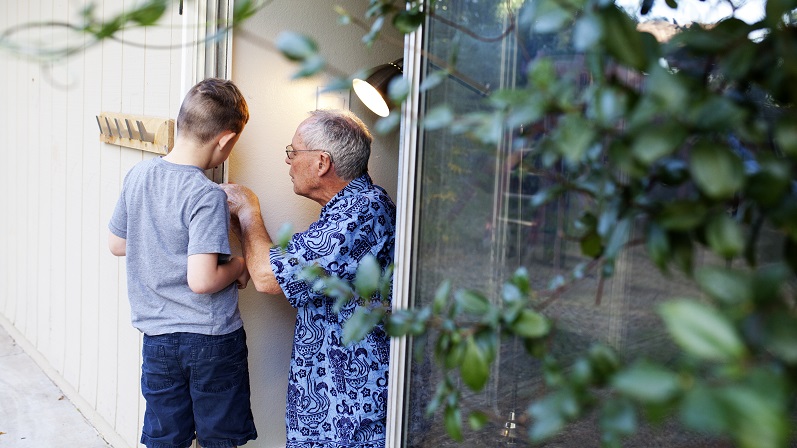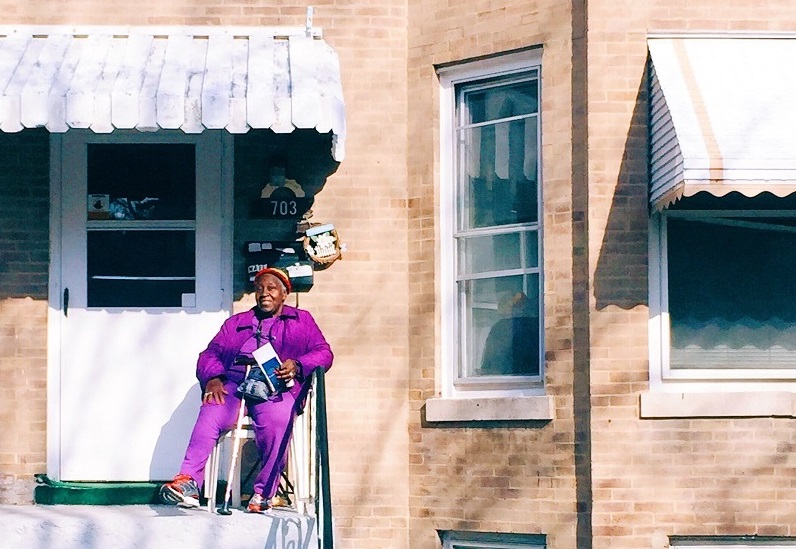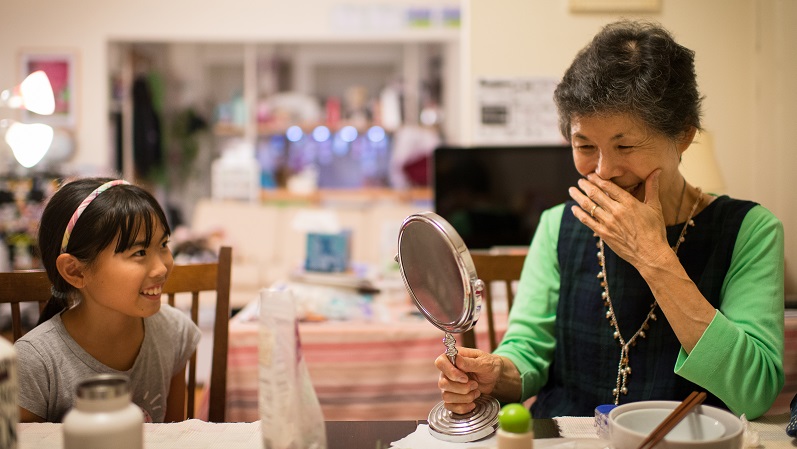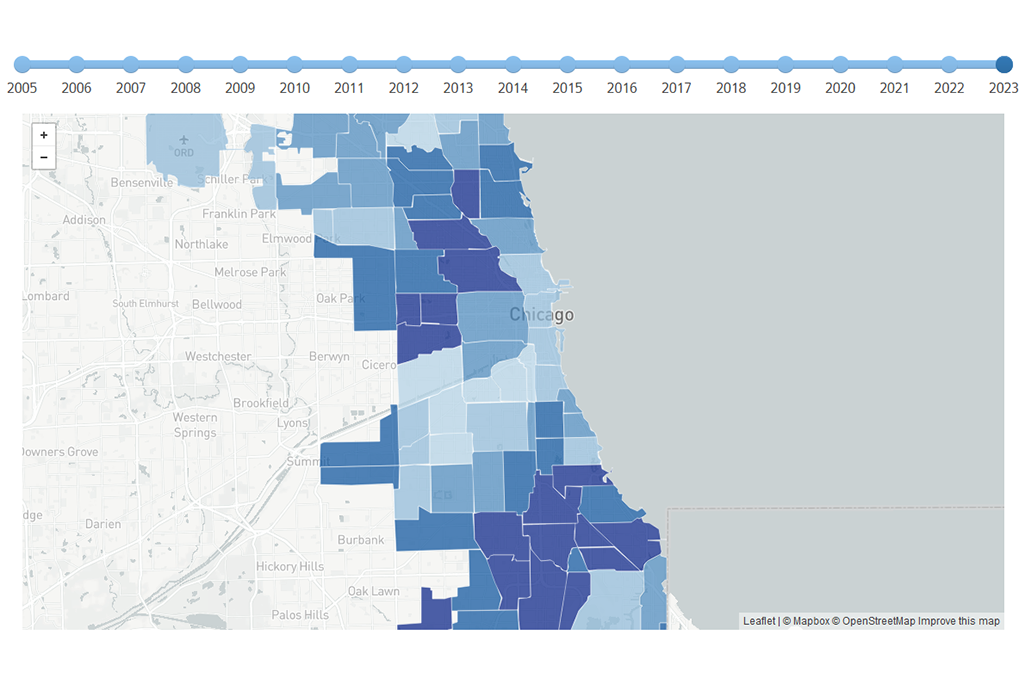The aging of the nation’s population will be one of the most significant demographic shifts of our time. Over the next two decades, older adults aged 65 and above will grow from 26 percent of the U.S. population to an estimated 34 percent by 2038, and there are significant concerns that cities and communities are not prepared to adequately meet the housing needs of this segment of the population.
As part of a project funded by the RRF Foundation for Aging, the Institute for Housing (IHS) sought to better understand the housing and economic challenges facing older adults and develop data resources to enhance the capacity of local decision-makers. Our report, Housing Needs and Economic Conditions of Cook County’s Older Adults, 2021, uses data from the American Community Survey (ACS) to identify current demographic and economic characteristics and trends for older adult households in Cook County. The report can serve as a resource for practitioners and policymakers to understand changing conditions, inform key housing challenges, and advance policy solutions. This report will also serve as the foundation for future analysis on specific issues facing older adults that require more in-depth data and analysis.

Image source: Flickr Creative Commons / Ryan Johnson
Stakeholder Engagement with Organizations Working with Older Adults
Substantive engagement with practitioners and issue-area stakeholders is the cornerstone of IHS’s applied research model, from issue-identification to data development to product development. For this project, IHS tapped into the expertise of roughly 20 organizations serving communities in Cook County including Age-Friendly Communities Collaborative, Elevate, Center for Disability and Elder Law, Garfield Park Community Council, Greater Chatham Initiative, Housing Opportunities & Maintenance for the Elderly, Jane Addams Senior Caucus, Metropolitan Mayors’ Caucus, Neighborhood Housing Services of Chicago, Chinese American Service League, Northwest Center, The Housing Authority of Cook County, The Preservation Compact, The Renaissance Collaborative, and others. These organizations provided subject-matter expertise and local knowledge into the distinct nature of economic insecurity and housing needs of older adults in Cook County as well as current and prospective policy solutions to challenges facing Cook County’s older adults.
This blog summarizes key takeaways and policy challenges from scoping conversations with these community partners. These insights helped IHS identify key topics and data needs in Housing Needs and Economic Conditions of Cook County’s Older Adults, 2021, and design a report that both highlights relevant trends and patterns and can serve as the foundation for future analysis on issues facing the County’s older adults. Additionally, as part of this project, IHS added substantial amounts of data on older adult demographic and socioeconomic conditions to the IHS Data Clearinghouse – information that will be used to serve the technical assistance needs of local practitioners going forward.
Key Older Adult Housing Challenges and Needs in Cook County
In interviews, IHS stakeholders expressed a wide range of housing and economic challenges facing older adults today and provided important insights on key data needs that will help advance their work. Our partners reported that at the household level, older adults in Cook County face growing economic insecurity from low and fixed incomes, with particular housing affordability challenges for both older adult homeowners and renters. During interviews, stakeholders also reported that much of the existing housing stock in Cook County’s suburban and urban communities may not be equipped to meet the changing needs of older adults as they age. Lastly, stakeholders emphasized that communities of color will likely experience distinct housing and economic challenges, amplifying the need for a racial equity lens to examine current conditions, assess potential policy impacts, and inform targeted programs across the region.

Image source: Flickr Creative Commons / Juan Pablo Mejia
A growing number of older adults face economic insecurity. There are stark income and wealth disparities among the older adult population. Stakeholders reported that many of the lower-income older adults they serve have limited wealth, little to no retirement savings, and often rely entirely on Social Security for their income. Social Security payments are based on past earnings, and for older adults that worked lower-wage jobs, these monthly payments can extend low incomes into retirement. Typically, older adults have lower incomes than the broader population, and when fixed incomes do not keep up with rising costs, older adults cannot afford basic and important necessities. Additionally, a growing number of older adults are living alone, and these single-person households have lower median incomes and higher rates of housing cost burden than older adult married-couple or multigenerational households. Understanding more about the changing composition of Cook County’s older households by household type and income levels for owners and renters was cited as critical information needed to better target policies and programs addressing the economic insecurity of older adults.
Housing Opportunities & Maintenance for the Elderly (H.O.M.E) provides affordable housing and supportive services for low-income older adults and reported that food security and access is a key challenge facing seniors with incomes below 30 percent of the area median income (AMI). Other stakeholders noted that economic insecurity among lower-income older adults was exacerbated during the pandemic, yet they faced even greater difficulties accessing assistance than before the pandemic. As a community-based organization disbursing COVID-19 economic assistance, Garfield Park Community Council (GPCC) expressed that initial versions of rental assistance programs required applicants to demonstrate lost income, preventing many lower-income older adults, whose incomes are fixed, from receiving available relief.

Image source: Reshot / darby
Homeownership preservation for low-income homeowners. Managing housing costs for older adult homeowners with fixed and lower incomes can be a challenge. Our community partners cited rising property taxes, utility and insurance costs, and ongoing property maintenance needs as some of the most significant contributors to housing insecurity for older adult lower-income households. For example, IHS partners Northwest Center and Southwest Organizing Project expressed that for lower-income older adult homeowners on fixed incomes, growing property taxes can contribute to housing insecurity and potential loss of their home. They reported that understanding the prevalence of tax delinquency among older adult homeowners is important in conducting their outreach and homeowner stabilization efforts.
Additionally, stakeholders noted that the ongoing costs of property maintenance can be difficult to address for older adult homeowners on lower and fixed incomes. These older adult homeowners may need to make difficult choices between home repairs and other essentials, potentially leading to more costly instances of deferred maintenance. Property maintenance can also be a challenge for older adults who do not have enough savings or equity in their homes to fund necessary repairs. Meanwhile, older adult homeowners living in communities of color may experience difficulties financing home repairs using traditional loans due to historic disinvestment and lending disparities, housing market volatility, and uneven appraisal practices.
Neighborhood Housing Services of Chicago (NHS) conducts homeownership counseling for Chicago’s older adult homeowners by helping them apply for property tax exemptions and switch to more affordable insurance and utility companies. By lowering older adult owners’ monthly housing costs to sustainable levels, NHS has helped save an average of $2,000 per household during the first year of counseling. They reported that older adults are more frequently targeted by predatory and overpriced insurance and utility programs that can threaten their ability to keep housing costs affordable. To help further address high housing costs among older adult homeowners, NHS reports that information on the growing number of low-income owners in different communities citywide could help them focus their counseling services, expand their reach, and make the case for additional resources. Additionally, NHS and others expressed an interest in policies that further help older adult owners lower their housing costs and noted the importance of understanding data on cost-burden, mortgage debt, and other indicators of housing insecurity for older-adult homeowners.

Image source: Reshot / JessicaKaplanPhotography
The importance of estate and succession planning. Another key challenge among older adult homeowners includes preserving the values of their homes to pass on to successive generations. Without the required documents and planning to legally transfer a family home, heirs’ may be unable to sell the home, refinance or secure a mortgage, or draw on equity to make repairs. For long-time legacy residents, retaining homeownership generation to generation can help households build wealth and mitigate potential displacement pressures.
The Greater Chatham Initiative expressed that a lack of succession planning among older adults in Greater Grand Crossing, Auburn Gresham, Avalon Park, and Chatham has resulted in lost intergenerational home equity and contributed to residential vacancy. Other IHS partners cited that this challenge also occurs across Chicago’s communities of color on the South and West Sides. To stem these instances of homeownership loss between generations and fill the existing need for succession planning, the Center for Disability and Elder Law (CDEL) provides lower-income older adults with the legal services and representation necessary to retain their home as an intergenerational asset and helps family members remain long-term residents. To more proactively provide these legal services to older adult homeowners, CDEL expressed a need for information on the variation in homeownership levels across the County as well as the prevalence of risk factors that may stymie property transfer to heirs, including reverse mortgages, unpaid property taxes, and foreclosure risk in different communities.
Lower-income older adult renters are vulnerable to displacement pressures and substandard housing conditions. Housing stability is a key concern for lower-income older adult renters with fixed incomes and few sources of wealth to rely on into retirement years, particularly as the number of older adults experiencing homelessness has grown in the last decade. Like renters more broadly, the majority of affordable rental housing available to low-income older adult renters is unsubsidized. These affordable units do not include the same affordability requirements as subsidized housing and are vulnerable to turnover and loss. As the supply of these affordable rentals continues to decline and demand from older adult renters grows, more lower-income older adult renters will likely struggle with rising housing costs, increasing housing cost burdens and displacement pressure. In addition to housing affordability, our partners reported that lower-income older adult renters are more likely to live in substandard housing and may face displacement pressures from poor living conditions. As a bulk of the Chicago region’s unsubsidized affordable housing stock is older, maintaining the quality of this stock is a critical issue that can impact housing stability for lower-income older adult renters.
Subsidized housing developments built from the Section 202 program and the Low-Income Housing Tax Credit program can provide dedicated and more deeply affordable housing for low-income seniors and shield them from rising rents. The Renaissance Collaborative (TRC), an affordable housing provider for older vulnerable adults, was formed partly in response to growing displacement risk and homelessness among older adults in Bronzeville. TRC reported that older adult residents wanted to remain in their communities, yet market-rate rents were increasingly out of reach. To meet this need, TRC developed two subsidized affordable housing facilities that include units for older adults that formerly experienced homelessness as well as wraparound services. Our partners also noted that there is a need for more affordable housing options for older adults that can accommodate intergenerational households. In response, H.O.M.E. and TRC have partnered together to develop an affordable housing facility for older adults that incorporates family units and intergenerational living.

Image source: Flickr Creative Commons / duesentrieb
A limited supply of accessible and integrated housing suited for older adults. Older adult households also face limited housing options that allow them to age in community. Stakeholders expressed that much of the existing housing stock seems to not have been built to accommodate older adults’ changing needs and preferences, and that data that may point to this mismatch are needed. For example, The Metropolitan Mayors’ Caucus and their Age-Friendly Communities Collaborative noted that the prevalence of two-story homes in suburban communities and lack of accessibility features in many multifamily buildings pose challenges as older adults’ mobility and needs change, impacting their overall quality of life and their ability to continue to live in a community. Since home modifications require buy-in from the property owner, accessibility features can often be out of reach for older adult renters compared to older adult homeowners. Meanwhile, incentives for property owners to incorporate accessibility features into their existing units are scarce. For example, many small ‘mom and pop’ landlords who own a bulk of the unsubsidized affordable 2 to 4 unit housing stock may require additional incentives and support to incorporate home modifications in their existing units.
Because of this, the onus for adding necessary and quality of life modifications falls on older adult households themselves and can often be costly. To help ensure that these accessibility features are within reach of lower-income older adult households, the City of Chicago’s Small Accessible Repairs for Seniors (SARFS) program provides older adult homeowners and renters living in single-family and 2 to 4 unit properties with repairs that facilitate aging in place. As SARFS delegate agencies, H.O.M.E. and Elevate provide aging-in-place improvements, such as installing grab bars and railings, and removing environmental hazards that pose health and safety risks to older adults. These stakeholders reported a high level of need for home repairs from older adults who for years have had to defer home maintenance projects because their fixed incomes have not kept pace with rising costs. For example, H.O.M.E. makes an average of six repairs per home.
Metropolitan Mayors Caucus also expressed a high level of home modification needs in the homes of Suburban Cook County older adults. They noted that Northwest Suburban Housing Collaborative manages a “Handyman Program” that provides small repairs to older adult owner-occupants in various suburban communities. This program focuses on lower-income older adults and older adults with limited English proficiency. Expanding on the Handyman Program, the CAPABLE pilot helps facilitate aging in place by providing free in-home visits from healthcare professionals and home repair services that remedy health and safety hazards.
In order to maximize the limited resources serving the older adult population, stakeholders administering home modification and aging in place programs in the City of Chicago and Suburban Cook County expressed the need to align and expand programs across different city agencies. As existing programs expand home modifications to more older adults in the City of Chicago and Suburban Cook County, city agencies and the organizations they partner with need information on the type of properties older adults live in to inform continued outreach and targeting. For example, some neighborhoods may have higher numbers of older adults living in buildings with five or more units, and older adult homes in these building types may represent a gap in existing programs and require unique modification needs.

Incorporating a racial equity lens in older adult programs and policies. Our community partners emphasized the need for incorporating a racial equity lens to examine older adult housing challenges in Cook County’s communities of color. Data on where older adults of color live and the nature of housing challenges they face is needed to inform targeted policies and programs that assist older adult households of color as they age and help close and mitigate the impacts of existing income, wealth, and neighborhood-level disparities.
For example, Metropolitan Mayors’ Caucus Age-Friendly Communities Collaborative noted that the older adult population in Suburban Cook County is becoming increasingly diverse and, in response, municipalities are exploring ways to develop culturally relevant programming and materials in their older adult initiatives and policies. In Chicago, IHS partners working in communities of color report that Black and Latinx older adults may face distinct challenges into retirement due to wealth inequality. IHS partners expressed that house prices have not grown as much in communities of color compared to majority-white neighborhoods, impacting the ability for older adults in neighborhoods of color to tap into their equity to meet expenses as they age. Additionally, long-term disinvestment in Chicago’s communities of color negatively impacts older adults’ access to public transportation, grocery stores, and proximate neighborhood essential services. For example, GPCC expressed that areas of East and West Garfield Park remain a food desert which limits older adult residents’ ability to access fresh food within walking distance.
Conclusion
Partnerships with local stakeholders and practitioners are a critical component of IHS’s research model, and the insights from our scoping conversations will continue to inform IHS’s work on older adult housing. Housing Needs and Economic Conditions of Cook County’s Older Adults, 2021 highlights baseline data and analysis that provides practitioners and policymakers context on key housing and economic challenges impacting older adults in Cook County. Developing a greater understanding of the distinct nature of older adult housing challenges highlighted in the report will require further investigation. Moving forward, IHS will continue to collaborate with our partners by producing technical assistance and custom data analyses that further explores older adult housing issues in communities across Cook County.






